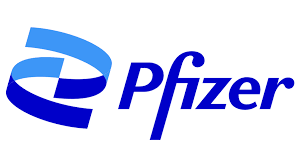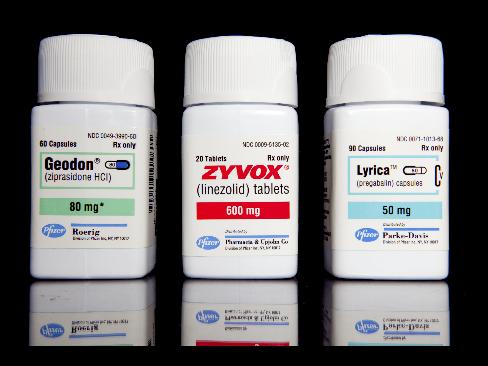Dividend Value Builder Newsletter
- Discover, Compare, and Evaluate Stocks Without Emotional Bias -
(Intrinsic Value Analysis For Over 300 Stocks)
Pfizer (PFE) Dividend Stock Analysis

Pfizer Dividend
The Pfizer dividend has been paid every year since 1901 and has increased for 15 consecutive years; qualifying the company as a Dividend Contender. PFE used to be a Dividend Aristocrat until it cut its dividend during the great recession.
Current Dividend Per Share Annualized: $1.72
Why you might want to own the company:
Pfizer may appeal to investors seeking reliable income through its attractive dividend and exposure to the long-term growth of the healthcare and biopharma sectors. If the company can successfully replenish revenue through innovation and acquisitions, it could reestablish growth momentum. Its strong financial position and global reach provide a solid foundation for navigating industry headwinds while delivering shareholder value.
Note: Pfizer (PFE) faces potential liability risks from its vaccines, including COVID-19 and meningococcal vaccines, due to possible rare adverse effects that could lead to lawsuits or regulatory actions. Expanding vaccination programs for children heightens scrutiny and legal exposure, especially if safety concerns, unexpected side effects, or manufacturing issues arise over time.
Is the stock price a Buy, Sell, or Hold?
Pfizer (PFE) Intrinsic Value – Margin of Safety Analysis
(updated November 2025)
Normalized Earnings Per Share (TTM): $1.72
Free Cash Flow Per Share (TTM): $1.82
Cash Flow From Operations Per Share (TTM): $2.29
Estimated Intrinsic Value: $32
Target Buy Price Based on Required Margin of Safety = $20
(Required Margin of Safety Based On Risk Stability Grade:
A = 0%, B = 20%, C = 40%, D = 60%, F = 80%)
Target SELL Price Based on Estimated Intrinsic Value = $34
(Allow Overvaluation Adjusted by Risk Stability Grade:
A = 40%, B = 25%, C = 15%, D = 5%, F = 0%)
Risk / Stability Grade: D
A grade indicates a quality company with a strong balance sheet, high earnings quality, and a positive business environment. These stocks require the slimmest margin of safety within the stock universe.
B grade indicates a company with a good balance sheet, good earning quality, and a stable business environment. The margin of safety required should be greater than stocks with an A grade but less than the average stock.
C grade indicates a company with a sufficient balance sheet, at least average earnings quality, and a reasonably stable business environment. The margin of safety required is greater than A & B stocks, but less than D & F stocks.
D grade indicates a company in good standing but has issues that could affect its stability and long term risks. D rated stocks should require a large margin of safety when purchased.
F grade indicates a company with significant issues that are currently affecting its stability and long term risks. Require an extremely large margin of safety for F rated stocks when purchased.
Financial Risk Grade: C
A grade indicates an extremely low probability of a dividend cut. This rating is reserved for companies with strong balance sheets and/or excellent dividend histories.
B grade indicates a very low probability for a dividend cut.
C grade indicates a low probability for a dividend cut and/or average safety risk.
D grade indicates there are issues that should be considered concerning future dividend payments.
F grade indicates serious dividend safety risks. Investors should complete comprehensive due diligence before investing.
Business Quality Grade: C
A grade indicates earnings quality is high or far above average.
B grade indicates earnings quality is good and/or above average.
C grade indicates earnings quality is acceptable or average.
D grade indicates earnings quality is poor and requires thoughtful due diligence.
F grade indicates the quality of the earnings is poor or far below average requiring serious due diligence.
Earnings Report: 9/30/25
AAAMP Portfolios Position Disclosures:
Treasure Trove Dividend (TTD) – None
Global Dividend Value (GDV) – None
Dividend Growth & Income (DGI) – None
Global Value (GV) – None
Global Value Aggressive (GVA) – None
Global Conservative Income (GCI) – None
Global High Income (GHI) – None
Company Description
Sector: Healthcare
Industry: Drug Manufacturers – Major
Company Overview:
Pfizer (PFE) is a global pharmaceutical company specializing in the development, manufacturing, and commercialization of prescription medicines and vaccines. It has a broad portfolio covering oncology, immunology, cardiology, and infectious diseases. Pfizer gained significant attention for its COVID-19 vaccine, developed in partnership with BioNTech, and continues to focus on innovation in biopharmaceuticals.
Company Strengths:
Pfizer benefits from a strong research and development (R&D) pipeline, a well-established global presence, and leadership in vaccines and infectious disease treatments. The company generates substantial cash flow, allowing it to invest in new drug development while maintaining a consistent dividend payout. Its ability to execute large-scale partnerships and acquisitions strengthens its position in key therapeutic areas.
Company Challenges:
Pfizer faces challenges from patent expirations on key drugs, which can lead to revenue declines as generic competition increases. The post-pandemic drop in COVID-19 vaccine and treatment sales has impacted its earnings, requiring new sources of growth. Additionally, regulatory hurdles, pricing pressures, and competition from other pharmaceutical giants create ongoing risks for its long-term profitability.


Dividend Value Builder Newsletter Membership (24 Issues) - $129/Yr.
Minimize Large Portfolio Drawdowns
Invest With Confidence In Less Time - Manage Your Portfolio Without Behavioral Errors
Disclaimer:
While Arbor Investment Planner has used reasonable efforts to obtain information from reliable sources, we make no representations or warranties as to the accuracy, reliability, or completeness of third-party information presented herein. The sole purpose of this analysis is information. Nothing presented herein is, or is intended to constitute investment advice. Consult your financial advisor before making investment decisions.
